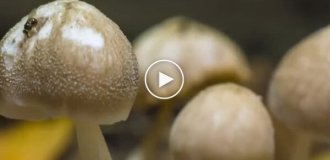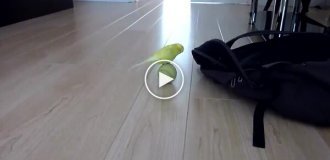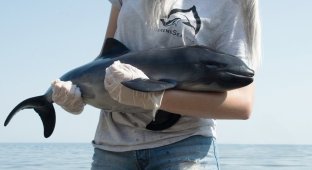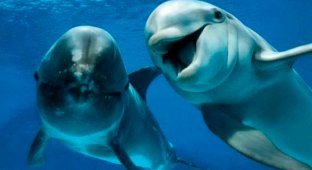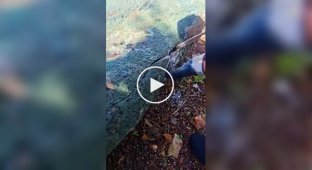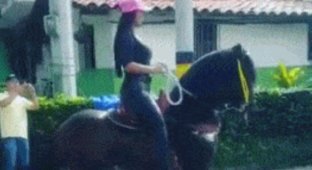She became the first of all her relatives to learn to live in fresh water. The first and the last. According to scientists, in 10-15 years this species will finally and irrevocably disappear from the face of the earth. So think twice before leaving your safe zone. 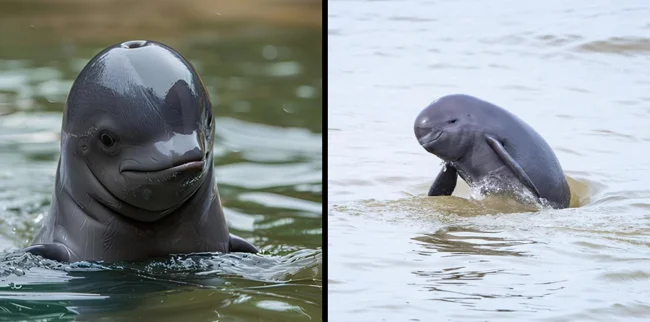
The East Asian porpoise, or river piglet - while you were pronouncing the Chinese name, it is quite possible that another individual died in the world. So read on! The more people know about the problem, the more opportunities there are to solve it. 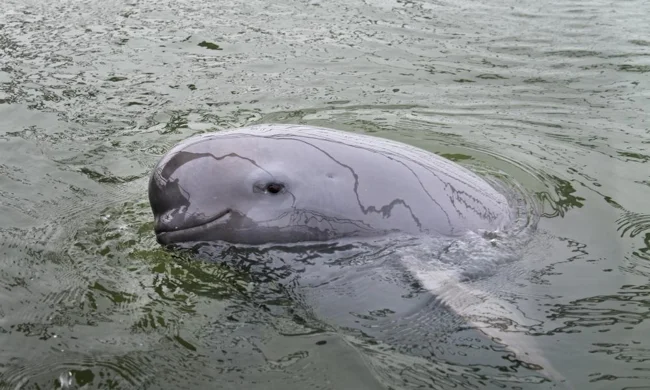
These porpoises look like a cartoon version of a regular dolphin!
So, what's wrong with the jiantong? And what are they anyway? They are systematically a separate species in the porpoise family. They are considered relatives of dolphins. But that's only on paper. In real life, river piglets look nothing like them! 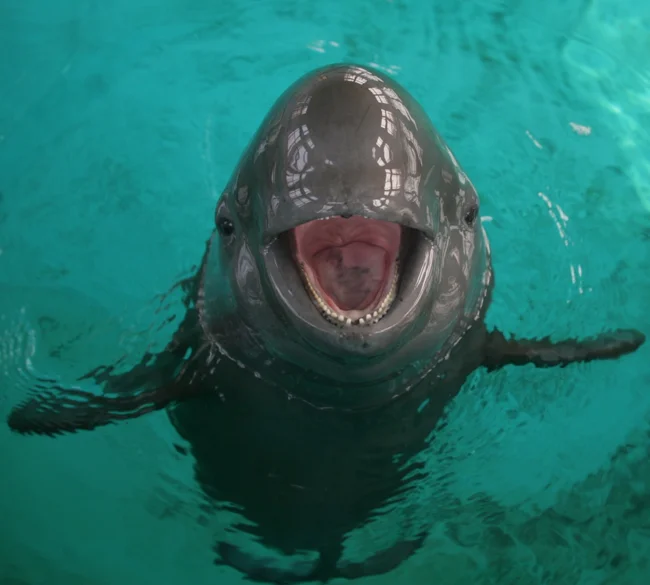
The fish trap is ready to go!
You can't confuse them with anyone else in appearance: imagine a Chinese pug dolphin. That's pretty much what they look like! Plump, dark gray, with a large round head and a completely flat muzzle. And tiny, too! On average, their body length doesn't exceed 1.8 m and their weight is 45 kg. If you look at the jiantun from the front, you can easily believe that they have their own civilization down there on the bottom - the beasts look so human. 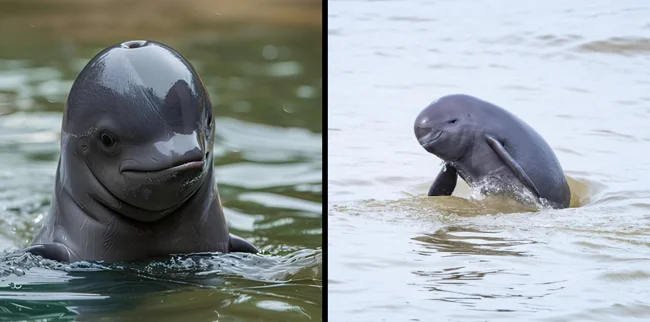
The alien creature looked at human civilization with bewilderment and decided to disappear in a hurry!
You can meet river piglets in only one country in the world - China. And even then, the mission is almost impossible. The animals are found only in the Yangtze River and small lakes in its basin. While the other 7 species of porpoises splash in the vast expanses of the ocean, these animals went against the current in the literal sense, because the river flows into the ocean! 
This river piglet definitely spent the holidays with grandma!
The main difference between the river piglet and the guinea pig is a new level of echolocation. In general, many marine mammals use it. Whales and dolphins send high-frequency sound into space, after which they perceive the sound waves reflected from the environment. This is how they see a 3D picture of the world. All types of guinea pigs use clicks for echolocation and communication. Guinea pigs produce a fairly "clean" narrow-band sound at a frequency of about 140 kHz. It's like pressing only one key on a piano. So, the river piglet uses not one "note" but entire chords to navigate in space! Their clicks are heard at a frequency of 128 to 133 kHz. 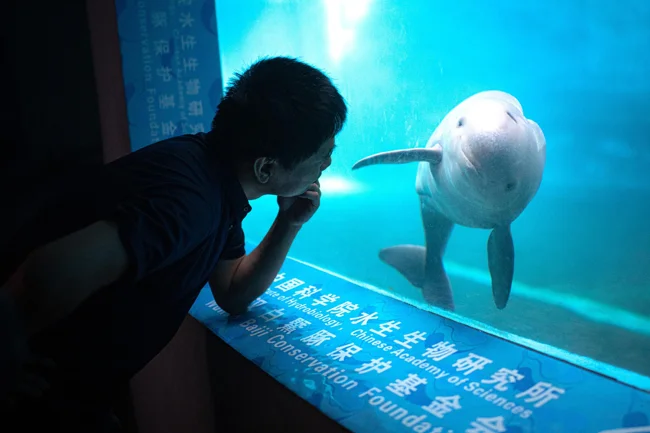
I don't understand why glass is talking to me?!
The essence of this innovation is that the wider the band, the more objects the animal can see in front of it. Plus, these objects, be it a fish, a stone or a snag, will be clearer. This helps the jiantuns navigate in muddy waters with a current, hunt and communicate with each other. 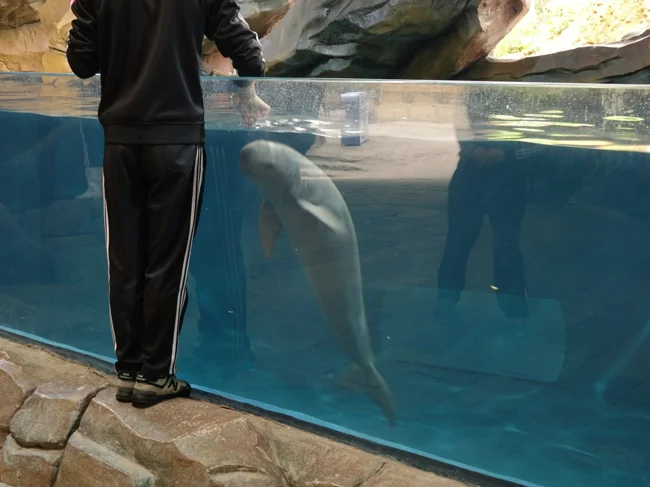
Contact between Earth and underwater civilization. Photo in color.
The broadband format of clicks is especially important for hunting, because piglets catch fish mainly at night and at the very bottom of the river. Pigs dive, scan the water column with ultrasound, find and catch the fish - and so on in a circle. 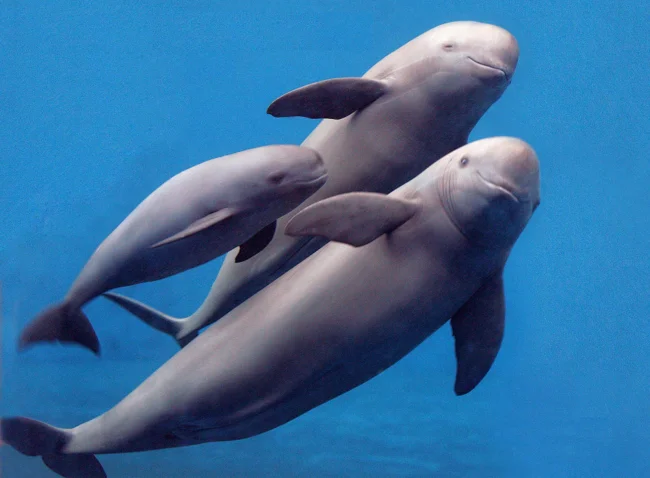
Usually porpoises hunt alone, often in mother + calf pairs and very rarely in groups of 10-20 individuals.
We have placed such an emphasis on the physical aspects of the porpoise sonar for a reason: it is this feature that is currently playing one of the most important roles in the extinction of the species. The fact is that the Yangtze is a shipping river. And when high-speed boats and motorboats sail along it, their propellers churn up the water, and cavitation occurs. This is the process of the formation and collapse of air bubbles - by Jiangtun standards, quite loud and noisy, about 100 - 150 kHz. The man does not hear and does not attach any importance to it, but such noise prevents animals from hunting. They have to click louder. But even this does not always help, and the piglets are left without dinner. 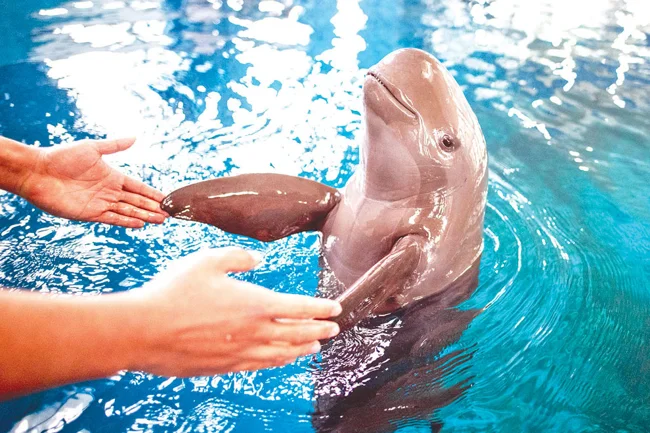
I want to be held!
To some extent, this also interferes with mating games, because the animals also communicate with each other by clicking. In the spring, the pigs seek out the company of their own kind. They splash in the shallows, play with each other and cuddle. The male does not help raise the young - the female most likely spends the entire year-long pregnancy and 6-month breastfeeding period alone. Sometimes the animals meet in pairs and groups of 3-5 individuals, but it is not clear exactly what their relationship is to each other. 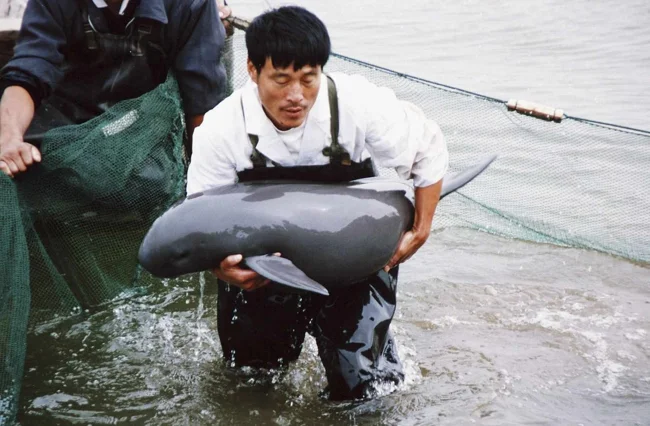
This is a scientist carrying a guinea pig for research. After all the necessary manipulations, the animal will be released back into the waters of the reserve where it lives.
Of course, excess noise is not the only reason for extinction. Mass fishing reduces not only the food supply for pigs, but also the number of pigs themselves. Sinking to the bottom, the animals get entangled in nets and die. Yes, jiantun are aquatic mammals, but they still breathe air. Pollution from wastewater, pesticides from fields, emissions from factories and cities do not add bonuses to health either. As a result, today the number of jiantun is estimated at about 1,300 individuals. This is a critically low mark - only 34 years ago there were 2,700 (!) pigs in the river basin. Now do you understand how much the environmental conditions have worsened, since their numbers have sharply fallen by 2 times? 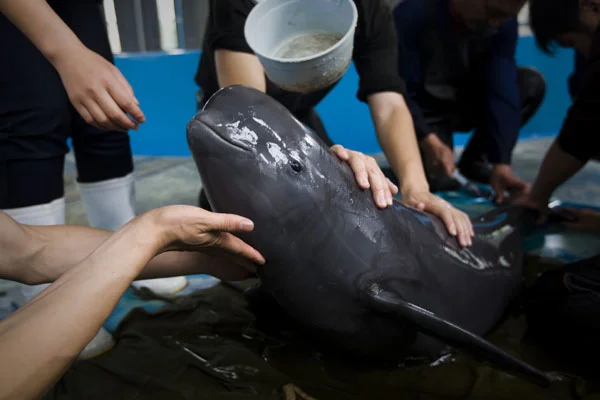
Previously, the rate of extinction of porpoises was not so rapid. From 1994 to 2008, the population decreased by an average of 6.06% per year.
To be fair, people have not turned a blind eye to the problem of the extinction of the only freshwater porpoise. Chinese laws prohibit harming animals and limit fishing in the river. The state also organized 7 "reserves" in which the animal population is supported, protected and encouraged to reproduce in every possible way. And if not for this, the piglets would have died out long ago - but now there is at least a tiny, but very real hope for their survival.
Add your comment
You might be interested in:


